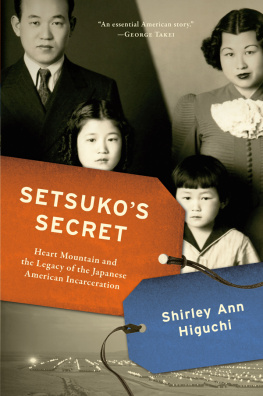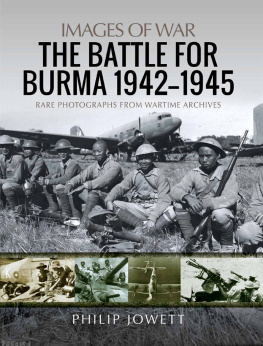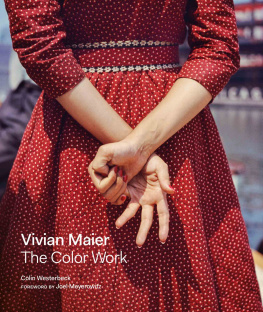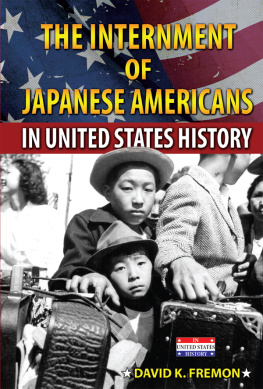Manbo Bill T. - Colors of confinement : rare Kodachrome photographs of Japanese American incarceration in World War II
Here you can read online Manbo Bill T. - Colors of confinement : rare Kodachrome photographs of Japanese American incarceration in World War II full text of the book (entire story) in english for free. Download pdf and epub, get meaning, cover and reviews about this ebook. City: Chapel Hill, Durham, Wyoming, year: 2012, publisher: in association with the Center for Documentary Studies at Duke University, University of North Carolina Press, genre: Home and family. Description of the work, (preface) as well as reviews are available. Best literature library LitArk.com created for fans of good reading and offers a wide selection of genres:
Romance novel
Science fiction
Adventure
Detective
Science
History
Home and family
Prose
Art
Politics
Computer
Non-fiction
Religion
Business
Children
Humor
Choose a favorite category and find really read worthwhile books. Enjoy immersion in the world of imagination, feel the emotions of the characters or learn something new for yourself, make an fascinating discovery.

- Book:Colors of confinement : rare Kodachrome photographs of Japanese American incarceration in World War II
- Author:
- Publisher:in association with the Center for Documentary Studies at Duke University, University of North Carolina Press
- Genre:
- Year:2012
- City:Chapel Hill, Durham, Wyoming
- Rating:3 / 5
- Favourites:Add to favourites
- Your mark:
Colors of confinement : rare Kodachrome photographs of Japanese American incarceration in World War II: summary, description and annotation
We offer to read an annotation, description, summary or preface (depends on what the author of the book "Colors of confinement : rare Kodachrome photographs of Japanese American incarceration in World War II" wrote himself). If you haven't found the necessary information about the book — write in the comments, we will try to find it.
The subjects of these haunting photos are the routine fare of an amateur photographer: parades, cultural events, people at play, Manbos son. But the images are set against the backdrop of the barbed-wire enclosure surrounding the Heart Mountain Relocation Center and the dramatic expanse of Wyoming sky and landscape. The accompanying essays illuminate these scenes as they trace a tumultuous history unfolding just beyond the cameras lens, giving readers insight into Japanese American cultural life and the stark realities of life in the camps.
Also contributing to the book are:
Jasmine Alinder is associate professor of history at the University of Wisconsin-Milwaukee, where she coordinates the program in public history. In 2009 she published Moving Images: Photography and the Japanese American Incarceration (University of Illinois Press). She has also published articles and essays on photography and incarceration, including one on the work of contemporary photographer Patrick Nagatani in the newly released catalog Desire for Magic: Patrick Nagatani--Works, 1976-2006 (University of New Mexico Art Museum, 2009). She is currently working on a book on photography and the law.
Lon Kurashige is associate professor of history and American studies and ethnicity at the University of Southern California. His scholarship focuses on racial ideologies, politics of identity, emigration and immigration, historiography, cultural enactments, and social reproduction, particularly as they pertain to Asians in the United States. His exploration of Japanese American assimilation and cultural retention, Japanese American Celebration and Conflict: A History of Ethnic Identity and Festival, 1934-1990 (University of California Press, 2002), won the History Book Award from the Association for Asian American Studies in 2004. He has published essays and reviews on the incarceration of Japanese Americans and has coedited with Alice Yang Murray an anthology of documents and essays, Major Problems in Asian American History (Cengage, 2003).
Bacon Sakatani was born to immigrant Japanese parents in El Monte, California, twenty miles east of Los Angeles, in 1929. From the first through the fifth grade, he attended a segregated school for Hispanics and Japanese. Shortly after Pearl Harbor, his family was confined at Pomona Assembly Center and then later transferred to the Heart Mountain Relocation Center in Wyoming. When the war ended in 1945, his family relocated to Idaho and then returned to California. He graduated from Mount San Antonio Community College. Soon after the Korean War began, he served with the U.S. Army Engineers in Korea. He held a variety of jobs but learned computer programming and retired from that career in 1992. He has been active in Heart Mountain camp activities and with the Japanese American Korean War Veterans.
Manbo Bill T.: author's other books
Who wrote Colors of confinement : rare Kodachrome photographs of Japanese American incarceration in World War II? Find out the surname, the name of the author of the book and a list of all author's works by series.












